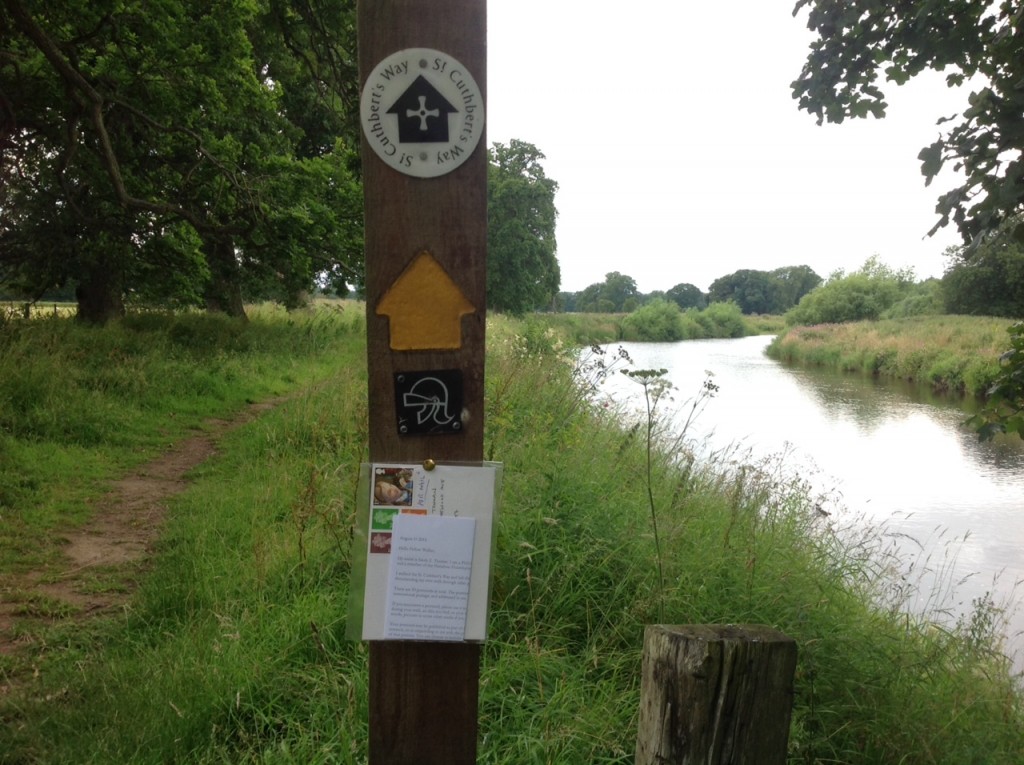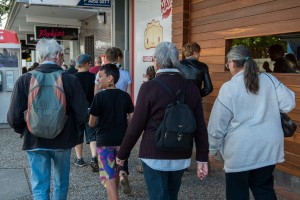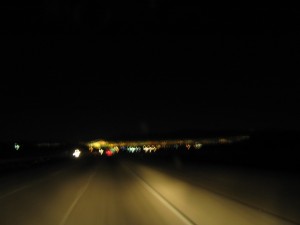2015 is the year of the WALK! Check out information here.
http://www.wien.info/en/vienna-for/sports/vienna-goes-on-foot-2015
2015 is the year of the WALK! Check out information here.
http://www.wien.info/en/vienna-for/sports/vienna-goes-on-foot-2015
 Sarah E. Truman is queering St. Cuthbert’s way. Her walk includes a postcard proposition. Look for these along the route!
Sarah E. Truman is queering St. Cuthbert’s way. Her walk includes a postcard proposition. Look for these along the route!
Commissioned by the Art Gallery of York University, and two-years in the making, Ring of Fire is a 300-person strong street procession by internationally renowned Trinidadian artist Marlon Griffith. Made for the City of Toronto and staged at the Parapan American Games, Ring of Fire takes place on Sunday, August 9 along University Avenue from Queens Park to City Hall at 12 pm.
Three days of experimental walks have been designed to create conditions that enable thinking, observing and theorising of being with matter, that is, being in the world, enable knowing in and through the world. The intention is to explore how we can further open our capacity to walk with data through sensory ethnographic attention to corporeality, embodiment and emplacement. To see details about each walk, click on the links below.
Meandering the Toowong – Thursday 6 August
Wired Walking – Friday 7 August
Walking with the Young – Saturday 8 August
http://www.uq.edu.au/education/index.html?page=221461&pid=28773
The Warren Run was a participatory event in a residential suburban area called ‘The Warren’, in the suburb of Marrickville in Sydney’s inner-west. Held on a glorious sunny Sunday morning in June the race was initially scheduled for Sunday the 5th of June, but was postponed 1 week due to heavy rain and storms.
The concept for the event was to have a running race in a suburban area, which took participants through residents’ private properties, inside houses, through backyards and over fences. The work aimed to disrupt the normal flow of human traffic through a typical suburban area, breaking some of the rules of this type of residential space and how we engage with it physically.
The race worked like a simplified version of orienteering. The orange and white markers used were official orienteering markers and 16 of these were placed as checkpoints at different locations along a route approximately 2.5 km in distance. Prior to the race, each runner (or group of runners) received a simple map with a list of addresses and some basic directions for each address. For example, ‘Julia and Bernie’s, 38 Cary St, Location: Backyard Cubby House. They also were given a punch card, which they could punch at each checkpoint with a unique imprint to prove they had made it to each checkpoint (this is also official orienteering equipment, albeit ‘old-school’ equipment as they mostly use electronic tags these days).
Runners left at 1 minute intervals, with their departure and arrival times recorded. So, effectively the race was a time trial. Runners could take whatever route they liked, just as long as they made it to each checkpoint.
We had around 20 participants. A nice mix of fit ‘runners’, non-regular runners, artsy types, families with kids aged 7-12, and a pair of dads who carried their toddlers on their shoulders the whole way!
The route included: a cubby house stop at ‘Julia and Bernie’s’, where the hosts had supplied oranges and jellybeans; a run straight through ‘Josh and Carlie’s’ living room; a rushed visit through a local art gallery at ‘Airspace Projects;’ and a bootleg nursery in ‘Branco’s Backyard’.
Participants really enjoyed the treasure hunt aspect of the race combined with the heightened sensory state achieved through running and being caught up in a race. They also commented on the unique experience of visiting all these people’s homes and in some instances meeting the people, but being in the act of running and passing through and only getting these quick little glimpses into people’s private spaces. For some who lived in the area, it felt like a place they really knew well had been opened up a little bit. They discovered new things about a place they were otherwise very familiar with.
For the record, the race was won by the pairing of locals Adam and Geoff with a time of around 32 min. Second place was a group of 5 boys aged 9-11, Warre, Archer, Tom, Les and Ubu and chaperoned gallantly by Mirabelle. There was one disqualification for Kev, who missed a checkpoint when he decided to take an unusual route in order to get quickly to the toilet stop at the gallery. Otherwise, all participants completed the race competently and without incident.
It was exciting and fun to put on this event. It had a great community feel to it, was very low key and really accessible to anyone who wanted to give it a go. It really opened up the community in a small, physical, simple, fun way and there’s potential to repeat the event next year and get more people involved.
Photographs by Clare Britton.
In spring and summer 2015, WalkingLab’s Sarah E. Truman conducted an in-school/out-of-school project with high school students in Cardiff, UK that explored emergent publics and emergent pedagogies through movement and writing.
Students conducted dérives, created sensory maps, wrote poetic critiques, and speculative writings about their affective experiences walking in school and public spaces. Some of the students’ writings were then “published” on poles throughout the city.
PROPOSITIONAL WALKING: Call for submissions
We are seeking submissions from artists and scholars on propositional walking. Propositions differ from pre-determined instructions; they embrace mysterious outcomes and chance occurrences. Erin Manning writes that propositions allow us to feel what may be. They are “thoughts in motion.”
We are curating a series of propositional walks for our research project “Performing Lines” [www.walkinglab.org]. We seek submissions that propositionally set a walk in motion.
Submissions should include a 250 word text description or propositional activator and 2 images (images should be high resolution jpg or png files of at least 150 dpi). Submissions will be curated and presented on the research website www.walkinglab.org . Submissions should be sent to sarah.truman@mail.utoronto.ca
Nothing like spending some glorious research time in Hobart, Tasmania, particularly walking the city Rivulet. The entire walk can take 2 hours, but we broke it into smaller sections and approached each walk with different research questions in mind. In preparing for our walk we spotted a post online that mentioned a platypus sighting. A better part of a morning was spent looking deep into the rock and stream crevices for this shy creature.
On a second walk we walked towards the Cascade Brewery, the former site of the Cascades Female Factory. The walk provided an opportunity to think about how walking connects place, time, and people and in particular the relationship between walking and violence. Specifically we asked questions about the way history is embedded in walking in the present.
Walking Country from what I understand is about place-maintaining work of Aboriginal Australians. On May 19th a large group convened at the Redfern community centre to walk with long term resident Cathy Craigie. The workshop was hosted by Downtown City Streets an initiative of the Space, Place and Country research cluster at Sydney College of the Arts.
During summer 2015, WalkingLab‘s Sarah E. Truman and David Ben Shannon are conducting a long-distance walking research-creation project along St Cuthbert’s Way to investigate the relationship between walking in nature and creativity.
They will be enacting a more-than-representation documentation, using their concept of sonic cultures.
Following Manning and Massumi (2014), they will take along the following propositions and enabling constraints:
• Walk St. Cuthbert’s way in five days; 24km on the first, 28km on the second, 19km on the third, 19km on the fourth, and 10km on the fifth.
• Remember Brian Eno and his oblique strategies.
• Remember time signature.
• Queer the landscape.
• Write lyrics, rhythm, melody, affect, space, repeat.
• Bring an iPad.
• Bring a note pad.
• Bring a pinhole camera.
• Bring a bowtie and dress for dressing-up.
UPDATE (2018)
They composed 10 ‘sonic cultures’ and have written an article in Capacious Journal about the project: http://capaciousjournal.com/article/queer-sonic-cultures/
On Thursday Feb 19th, I had the pleasure of attending a talk on the UNSW campus in Sydney by Cary Wolfe and Maria Whiteman. Maria’s work (http://maria-whiteman.squarespace.com/) speaks to many of the concepts we have been collectively exploring through this larger project, namely movement, affect, ecologies, and sensory knowing. They presented on her video installations “Mountain Pine Beatle” and “Roadside Kestrel.” One of the aesthetic or affective cuts that I took from her presentation and the videos was the repetitive image of walking feet filmed from above, moving over different terrains and topologies, and the reoccurring motif of the side car mirror. There was a lot of talk about these projects in relation to Timothy Morton’s work on ecology, intra-species, environmental degradation, and human response in the face of catastrophe. However, the feet and the mirrors activated a nostalgic sense of longing, materializing modes of transportation through lands, much like the work of Elinor Whidden (http://www.elinorwhidden.com/92738/home/) that aims to examine issues related to Colonialism, silence, invisibility, and violence.
As part of a neo-liberal narrative of progress, climate assumes that change is teleologically directed by known human actions. Dominant climate change discourse is saturated with conjectures in which humans will control the future or save the past. The language that frames such discourse is often laden with urgency and impending crisis of the world’s end, yet, as Clare Colebrook (2012) has argued, this threat is perceived at a distance. She writes, “there is neither panic nor any apparent affective comportment that would indicate that anyone really feels or fears [this threat]” (p. 53). Climate change she contends is constituted through the consumption of affect – news coverage of natural disasters; apocalyptic movies – but without intensity “without any sense that our bodies and our time are mutually implicated in environmental changes” (Neimanis & Walker, 2014, p. 559). Rather than a view that climate composes a backdrop to human existence, climate is ‘in us’ (Colebrook, 2011); or as Whiteman and Whidden’s work attests “we are ‘weather bodies.’”
Here i draw on Astrida Neimanis and Rachel Loewen Walker’s (2014) concept of “weathering.” Weathering they contend is “a way of being/becoming, or a mode of affecting and differentiating that brings humans into relation with more-than-human weather” (p. 560). They argue that such a re-orientation shifts the question of “what can we do to stop climate change” (which keeps climate change at a distance) to “how is climate change me?” (p. 561).
WalkingLab’s Louise Phillips’ Walking Borders work is profiled on Right Now an Australian Human Rights website.
An archive is commonly understood as a collection of historical records providing information about a place, institution, group of people or the physical place they are located. Anarchive, in contrast, is an activity that resists mere documentation and interpretation in favour of affective and material processes of production, where archival ‘technicities’ create new compositions and new nodes of research.
Anarchiving means approaching matter from new perspectives in order to uncover unprecedented relationships between the works. Unlike an archive concerned with preservation and coding practices that aid in the retrieval of data, the anarchive aims at stimulating new nodes of production. While an archive is concerned with an original artwork and its description, anarchives suggest new ways of using and producing new work. Taking up the proposition of anarchival techniques, graduate students at the University of Toronto created a series of anarchival proposals based on a series of walks in and around Toronto. In one instance a student and her sibling went on simultaneous walks in Toronto and Japan “with each other.” Another student created flip books from gps drawings, while a third used pinhole photography and text to produce a series of folded ‘drawings.’
Using the form of a parade another student built parade floats. The looped videos document these floats parading in her apartment, along the Humber river and in a west-end neighbourhood. In the first procession ruderal species were collected from Toronto and used to create a float, which was then paraded throughout an apartment posing questions about the relationship between inside and outside, nature and culture. The Humber river float references the history of the region and in particular Hurricane Hazel, while the west-end float composed of a gravestone comments on the gentrification of the area.
In November 2014, artist Jeremy Wood came to the University of Toronto and offered a GPS cartography and drawing workshop.
Participants spent three days exploring the embodied environment through GPS mapping and drawing.
Several participants attempted to draw specific images using the technology, others mapped walking and biking commutes in the city, and one group used “propositions” that gave them instructions on how to navigate: for example, one participant was instructed to only walk in diagonal lines and created a “zig zag” map.
British artist Jeremy Wood is in Toronto for a 3 day GPS mapping workshop at University of Toronto (OISE). Participants are mapping the city and will present some of their work along with Jeremy’s public talk at Hart House on Thursday November 6th.
 The Walking Neighbourhood will have a series of events this month in Sydney, Australia.
The Walking Neighbourhood will have a series of events this month in Sydney, Australia.
For more information visit: Art and About Sydney’s website.
 Welcome to the Mattering Reading Group; read the texts selected and join us for a close reading and discussion. Room 10-139. The texts for the 2014 fall semester are:
Welcome to the Mattering Reading Group; read the texts selected and join us for a close reading and discussion. Room 10-139. The texts for the 2014 fall semester are:
Barad, Karen (2007). Meeting the universe halfway. Durham, NC: Duke University Press.
Guattari, Felix. (2013). Schizoanalytic cartographies. NewYork: Bloomsbury.
Massumi, Brian. (2014). What animals teach us about politics. Durham, NC: Duke University Press.
Friday September 19 12:30 to 2:30: Barad Part 1 and 11
Friday Oct 3 12:30 to 2:30 : Guattari Analytic Cartographies (Chapter 1) to The Domain of Flows
Monday November 10 4:00 to 6:00: Guattari The Domain of Phyla (Chapter 6) to Cracks in the Street.
Tuesday November 25 12:20 to 2:30: Massumi
Last spring (May 2014) WalkingLab‘s Sarah E. Truman set up a dark room in her basement. It was a time when many researchers were experimenting with GoPro cameras and other wearable technologies as a way to record movement, and she and Stephanie Springgay wanted to reconsider more analogue approaches. They built several pinhole cameras out of coffee tins, shoe boxes, and a Chinese tea chest and took them on walks as activation devices to intervene in the process of walking-thinking.
Because pinholes typically require long exposure times the cameras are usually mounted in one place for the duration of the shot. Moving the camera during the exposure time can produce ghostly gestures; a palpable affect of rhythm and light. The long exposure time forced them to pause, to attend to thinking-in-movement and apparatuses of capture.
Dark room chemicals are toxic so they have traded the analogue process for a pin hole mount on a DSLR camera and taken to walking while shooting.
In conjunction with the summer exhibition called “The Source: Rethinking Water Through Contemporary Art”, at Rodman Hall Art Centre, artist Elizabeth Chitty lead a Sound+Imagewalk on the banks of Twelve Mile Creek. Participants walked the Participark Trail along Twelve Mile Creek in silence and contemplated space, water, and power.
“The City as Written by the City” is artist Sarah Cullen’s walking project wherein she maps her peripatetic movements with a pendulum and pencil. Organized by C Magazine, at artist collective space “8-11,” Sarah Cullen taught us how to make pendulums and then sent us out to explore Toronto’s Chinatown and create our own maps.
The Walking Neighbourhood Hosted by Children, directed by Lenine Bourke, is an interactive walking tour lead by children and/or youth that explores local communities on foot. The project has been enacted in more than 8 different cities in Australia, Europe and Asia. The Walking Neighbourhood offers participants and audiences a new way to see and experience places and spaces. Children are in control of developing the artistic encounter, guiding an audience, navigating the physical space and sharing their experiences of autonomy and their world, all the while creating new friendships.